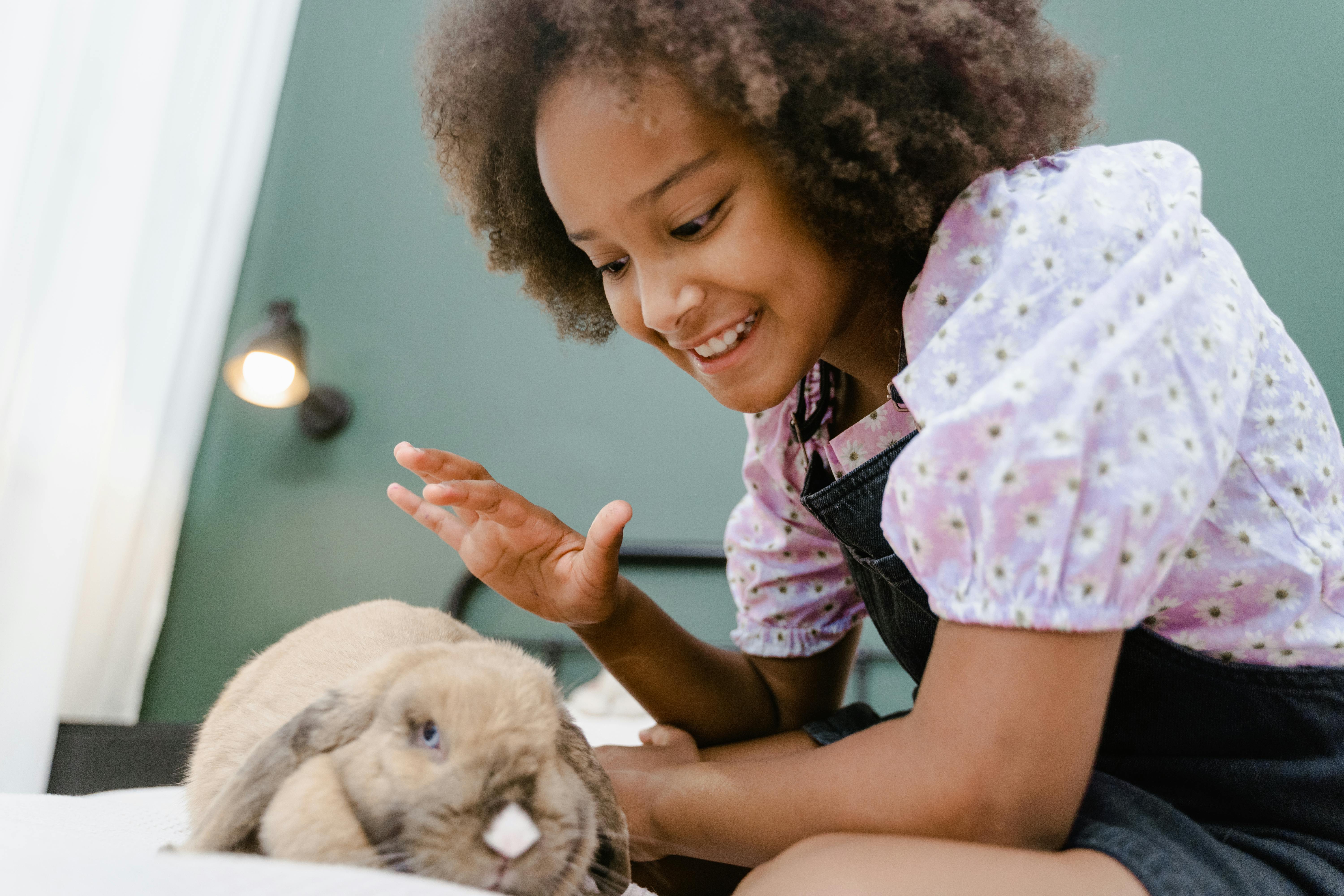
Effective Ways to Train Your English Spot Rabbit in 2025

Training your English Spot rabbit (or any pet rabbit) requires a combination of patience, understanding of rabbit behavior, and effective techniques tailored to their unique needs. These adorable creatures, known for their distinctive spots and friendly temperament, can be trained not only to perform tricks but also to enhance their overall well-being and strengthen the bond between you and your pet. In this article, we will explore various methods and tips for successful rabbit training, focusing on practical strategies that align with the latest recommendations for rabbit care in 2025.
Understanding Rabbit Behavior for Effective Training
To successfully train your rabbit, you must first understand **rabbit behavior** and instincts. Rabbits are social animals that thrive in environments where they feel safe and secure. Observing your pet’s body language and reactions will provide insights into what motivates them. For example, a rabbit’s binky—a joyful jump—is a sign of happiness, while thumping can indicate fear or distress. By recognizing these signals, you can create a more effective training environment that addresses your rabbit’s emotional needs.
The Importance of Positive Reinforcement
Positive reinforcement is crucial in rabbit training. This technique involves rewarding your English Spot rabbit with their favorite treats or praise after they exhibit desired behaviors. For instance, if you want to teach them to come when called, you can use **rabbit food treats** or small pieces of fresh vegetables as rewards when they respond to your call. This approach not only encourages the desired behavior but also strengthens the bond between you and your rabbit through mutual trust and interaction. Remember to avoid punishment, as it can lead to fear and anxiety.
Setting Up an Ideal Training Environment
Creating a conducive space for training is essential for the success of your rabbit training process. Consider setting up a quiet area with minimal distractions where your rabbit can focus. Use **rabbit toys** to engage their interest during training sessions. Providing a safe environment encourages confidence, making it easier for them to learn new tricks. You can use a large pen, a designated room, or even a quiet corner in your home where your rabbit feels secure. Ensure the area is free of hazards, as safety should always come first in rabbit care.
Establishing a Routine
Rabbits thrive on routines, so incorporating training into your rabbit's daily schedule can yield better results. Plan short sessions, around 5-10 minutes long, ideally after feeding or during their active hours when they are more alert. Repetition is key—consistency helps your rabbit grasp commands quickly. Monitor their progress and adjust the routine as necessary. Incorporating training sessions regularly can create a structured environment, making it easier for your rabbit to learn and adapt.
Practical Training Techniques for Your Rabbit
With a solid understanding of rabbit behavior, it's time to explore specific techniques that can help you train your English Spot rabbit effectively. These strategies accommodate their learning style and utilize their natural instincts, making training sessions enjoyable for both you and your furry friend.
Teaching Basic Commands
Starting with basic commands is an excellent way to ease into the training process. Commands like "come," "sit," and "stay" can be vital for a well-behaved rabbit. To teach your rabbit to come, use a consistent verbal cue along with a treat. Call their name, followed by the cue, and reward them when they approach. For "sit," you can gently push down on their back slightly (don't force them), and when they do sit, reward them. Over time, they will learn to associate these words with actions, enhancing **rabbit communication** between you and your pet.
Incorporating Fun Activities
Engaging your rabbit in fun, enriching activities can also aid training. Using **rabbit enrichment** tools like tunnels and playsets encourages natural behaviors and skills, all while making training fun. For example, you can set up a small obstacle course and train your rabbit to navigate through it. Each time they succeed, reward them with treats. This not only stimulates their mind but promotes a healthy lifestyle, satisfying their demands for exercise and exploration.
Using Clicker Training
Clicker training is another effective method to train your rabbit. This technique involves using a clicker to mark the exact moment your rabbit performs the desired behavior, followed by a reward. To start, introduce the clicker to your rabbit by pairing the sound with a treat. Once they associate the click with rewards, use the clicker during training sessions to enhance learning. This immediate feedback helps your rabbit understand which behaviors you want to encourage, making it a fun and interactive learning experience.
Maintaining the Health of Your Pet Rabbit
Training goes hand-in-hand with rabbit care. Ensuring your English Spot rabbit is healthy and happy can facilitate successful training sessions. A rabbit in good health is more likely to engage positively in training and respond well to commands.
Regular Health Check-ups
Taking your rabbit for regular veterinary check-ups is essential. Regular health monitoring helps catch any issues early, ensuring your pet remains active and engaged. Discuss diet and nutrition with your vet to provide balanced meals suitable for your rabbit’s needs. Moreover, being attentive to common **rabbit health issues** and ensuring adequate veterinary care will keep your rabbit fit and ready to learn.
Nutritional Considerations for Optimal Training
Providing a well-balanced diet can significantly influence your rabbit's mood and energy levels, directly affecting their training capabilities. Ensure that your rabbit has access to high-quality **rabbit food**, hay, and fresh vegetables daily. Avoid excessive treats; instead, use high-value rewards that are healthy and assist in your rabbit's growth and **rabbit health**. Familiarize yourself with **rabbit nutrition advice** to develop a feeding schedule that aligns with their training aspirations.
Creating a Safe and Comfortable Habitat
A dedicated, safe habitat is crucial for the mental well-being of your rabbit. Ensure their housing has sufficient space to roam around and includes cozy areas for resting and hiding. Providing comfortable bedding and safe chew toys contributes significantly to your rabbit's comfort and reduces stress, leading to improved training interactions. Always adapt your rabbit's habitat based on their **rabbit instincts** and social behavior to foster an enriching environment that encourages learning.
Key Takeaways
- Understand your rabbit's behavior for effective training strategies.
- Utilize positive reinforcement techniques to build trust and engagement.
- Set up a dedicated training space that minimizes distractions, using fun activities.
- Prioritize regular health check-ups, nutritional balance, and a safe habitat.
- Incorporate routines and specific techniques like clicker training for successful results.
FAQ
1. How can I teach my rabbit to socialize with other pets?
Begin the socialization process slowly and ensure that interactions are safe and supervised. Gradually introduce your rabbit to other household pets, using positive reinforcement techniques to reward calm behavior from both parties. Always monitor their interactions to prevent stress and aggression, understanding that rabbit behavior varies widely in response to new animals.
2. What are the important signs of stress in rabbits?
Recognizing signs of stress is crucial for rabbit welfare. Common stress indicators include aggressive behavior, refusal to eat, excessive thumping, or hiding. If you notice these behaviors, reevaluate your rabbit’s environment and training practices. Providing enrichment and comfort can help mitigate stress levels.
3. How often should I provide enrichment activities for my rabbit?
Daily enrichment is ideal for keeping your rabbit stimulated and engaged. Rotate toys and activities to keep your rabbit interested, including physical challenges such as tunnels and climbing spaces, as well as mental puzzles that require problem-solving. Ensuring **rabbit playtime** is essential for their happiness.
4. Can older rabbits still be trained effectively?
Absolutely! While older rabbits may take a bit longer to adapt to new tricks or commands, they can still learn successfully with patience and consistency. Tailor your training sessions to account for any physical limitations they may have due to aging, and focus on enriching their environment for better social engagement.
5. How do I ensure my rabbit feels secure during training?
To ensure your rabbit feels secure during training, establish a consistent routine and a calm environment. Avoid loud noises and sudden movements, and be gentle in your interactions. Consider using their favorite treats to encourage a positive association with learning. Gradually expose them to new training concepts, allowing them to proceed at their own pace.
6. What's the best way to manage a multi-rabbit household?
Managing multiple rabbits requires careful introduction and observation. It’s important to separate them initially to avoid territorial disputes. Gradually introduce them in neutral territory to avoid conflicts over resources. Consistently monitor their interactions and ensure each rabbit has its own resources to minimize competition.
7. Where can I find more resources on rabbit care?
Numerous rabbit welfare organizations and online forums provide valuable resources on rabbit care, training advice, and community support. Websites dedicated to **rabbit welfare** often offer articles, guides, and videos that cover a range of topics. Joining local rabbit clubs or attending rabbit-related events can further enhance your understanding and experience.
